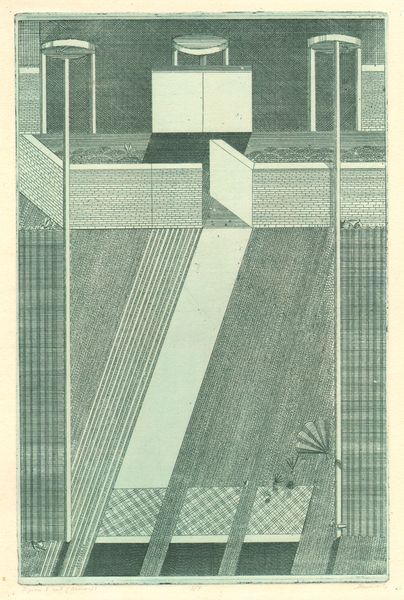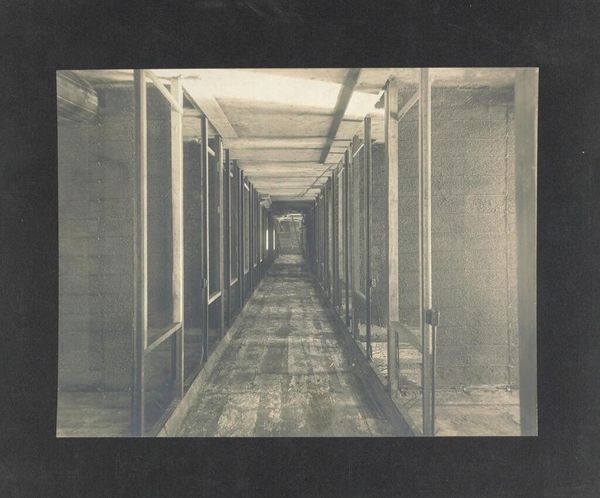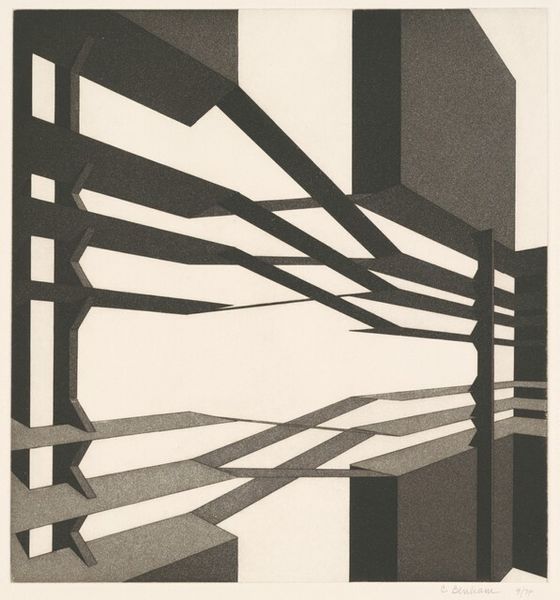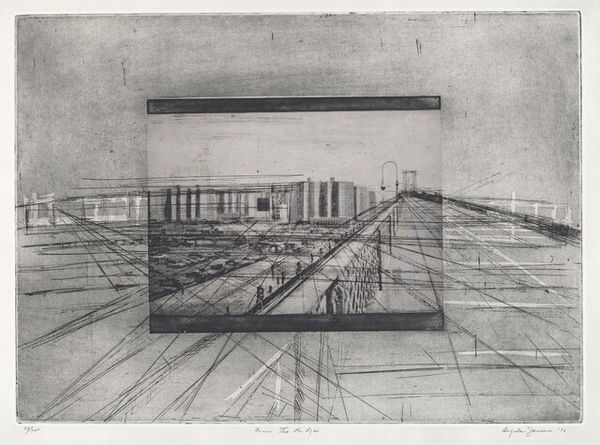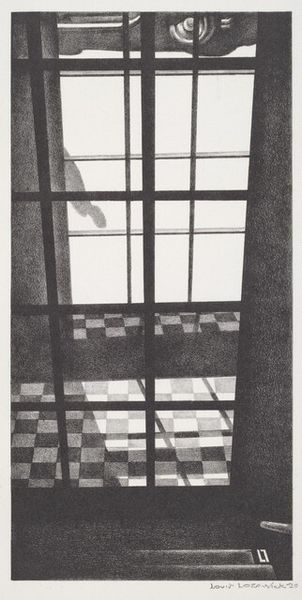
drawing, print, graphite
#
drawing
# print
#
sculpture
#
landscape
#
perspective
#
geometric
#
line
#
graphite
#
modernism
#
realism
Dimensions: image: 305 x 251 mm paper: 292 x 403 mm
Copyright: National Gallery of Art: CC0 1.0
'Under the Boardwalk’ was made in 1947 by Harry Brodsky, using graphite on paper. There is a real attention to detail in this piece, each mark carefully considered, built slowly to form a complex image. You get the sense that Brodsky allowed the piece to gradually evolve, responding to the emerging image. It shows an artmaking process as a journey, rather than a race to the finish line. The texture Brodsky coaxes from the graphite is incredible. Look at how the shadows cast by the boardwalk supports are rendered with such care, each line contributing to a dense, rich darkness. There’s a lovely contrast between these areas and the lighter, almost hazy quality of the paper around them. I’m reminded of Piranesi's architectural prints, where the subject is not just the building, but the atmosphere that surrounds it. Ultimately, what I take away from the work is its stillness. Despite the complexity of the structure, there’s a quietness, an invitation to contemplate the space. Brodsky invites us to see more than the physical structure, but the mood, the feeling, the memory of 'Under the Boardwalk.'
Comments
No comments
Be the first to comment and join the conversation on the ultimate creative platform.
